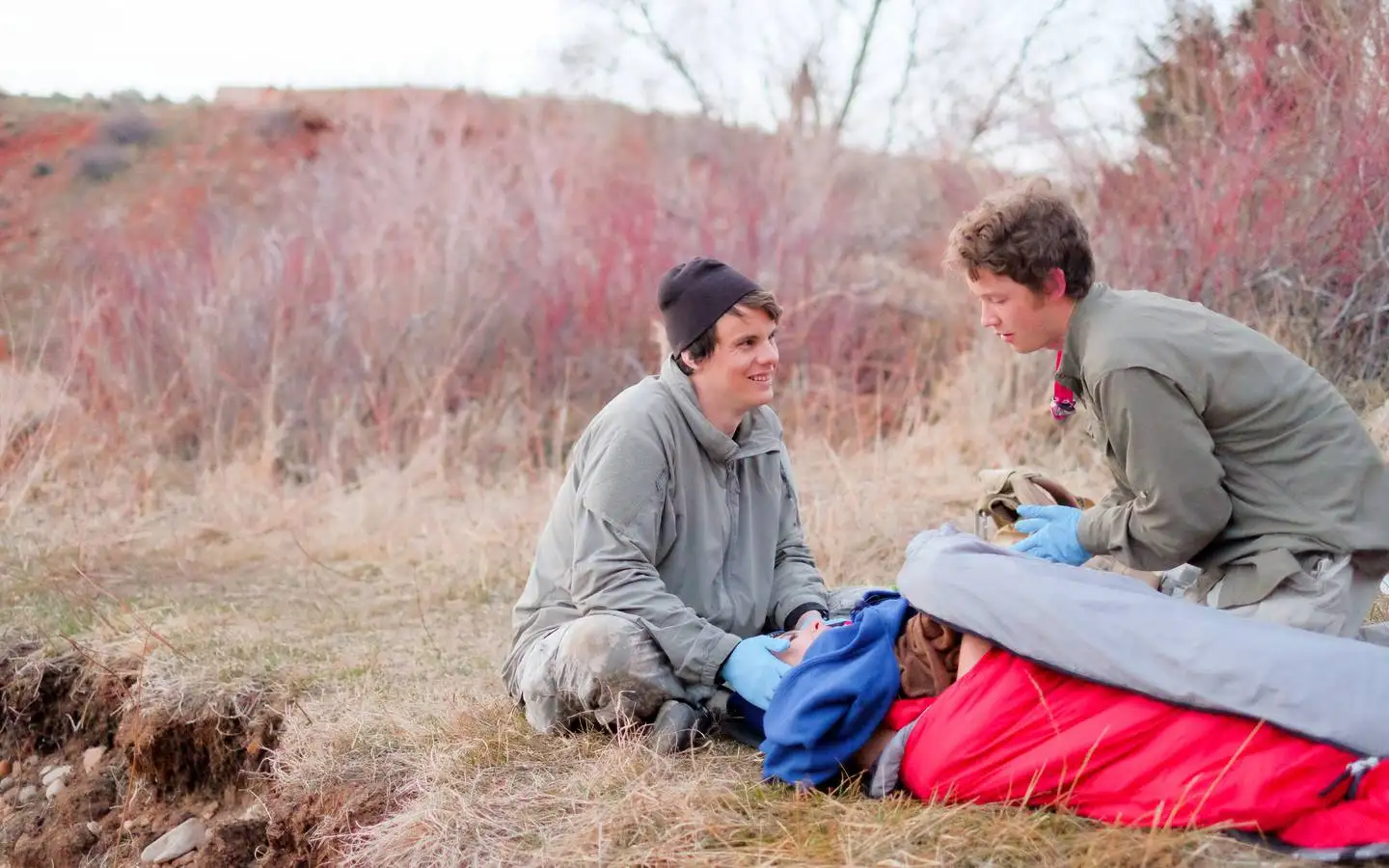The Setting
Two friends are on a long run in the foothills of the Wind River Range in Wyoming in August. It’s a hot day. Four hours into the run your companion stumbles, slows, staggers, and sits on a log. He says he “feels awful.”

SOAP Report
Subjective/Story/Summary
The patient is a 34-year-old male. His chief complaint is “feeling awful.” We are four hours into a planned 24-mile trail run at elevations ranging from 6000-8000’ (1800-2400m).
Objective
Patient Exam:
There is no mechanism of injury. Nothing unusual found on head-to-toe assessment. No edema, rashes, swelling, bruises.
Vital Signs
| TIME | 1000 |
| LOR | A+Ox4 |
| HR | 76, strong, regular |
| RR | 20, easy, regular |
| SCTM | Pink, warm, flushed (seems appropriate amount of sweat for this run) |
| B.P. | Strong radial pulse |
| Pupils | PERRL |
| T° | Not taken, skin not warm to touch |
History
| Symptoms: | The patient complains of feeling dizzy, shaky, “weird,” anxious, nauseous, and having a dull headache. |
| Allergies: | Denies |
| Medications: | Ibuprofen 800mg at 0500, 400mg at 1000 |
| Pertinent Hx: | None |
| Last in/out: | The patient has been drinking water. He drained his 2L hydration backpack twice today. He has not urinated since the start of the run. He has eaten two energy bars (200mg sodium each) and one salt tablet (215 mg sodium). He denies thirst. |
| Events: | The patient has been trail running for four hours (20 miles) through the Wind River Range. It’s hotter than expected under a blazing sun. The patient has a visor sun shade, sunglasses, light synthetic clothing, and a very light pack. |
Stop...
What is your Assessment and Plan?
Take a few minutes to figure out your own assessment and make a plan.
Don’t cheat—no reading on without answering this first!
Assessment
- Over-hydration (hyponatremia)?
- Hypoglycemia/fatigue?
- Heat Stress/Exhaustion?
- Altitude illness?
The Plan
- Rest in the shade.
- Slow water intake.
- Eat more salty energy bars.
- Monitor for improvement. An evacuation decision is premature. We have four miles to go and eight hours of daylight. This location is accessible by ATV or helicopter.
- Interview the patient to assure we have a complete history.
Anticipated Problems
- The problem worsens. We are unable to continue.
Comments
These signs and symptoms are vague and could be any number of problems: over-hydration, fatigue, hypoglycemia, altitude illness, a flu-like illness. The history of water intake suggests over-hydration. Altitude illness is unlikely in this time frame unless the patient has a history of AMS or the altitude is really high (it’s not). We can’t rule out heat exhaustion, although the normal mental status suggest that heat stroke is not present. Maybe he’s just getting sick.
Interviewing the patient is a good idea–you might find out more about recent health, food intake, hydration, previous experience on endurance runs, etc.
The Tale Continues
The interview with the patient reveals that their total water intake since 6:00AM has been six liters. His plan was to start the day with “a full tank.” The patient ate the energy bars and the salt tablet and drank the water to keep their energy level high. He has no concept of the risk of over-hydration. He does have a history of “bonking” in previous multi-hour exercise sessions which he attributes to not eating and drinking properly.
After an hour of rest with only sips of water the patient urinates copious clear urine and states they can walk. The patient has not eaten due to nausea. They are A+0x4 and state that they no longer feel weird or shaky. They think they must have “hit the wall.” The patient reports a dull headache. The dizziness has resolved. You begin to walk to the trail head. The day remains hot and you both are now very stiff from the hour of inactivity.
The walk to the trailhead is uneventful. The patient drinks a half-liter of water enroute, urinates copiously once more, and eats another energy bar. He arrives at the trailhead feeling tired and sore–in his words, “wasted.”
Comments
We don’t know exactly what was going on here. The patient never saw a physician. He convinced himself he had a touch of the flu. Our suspicion is over-hydration (hyponatremia), the subject of this discussion.
As a reminder, the primary risk factor for exertional hyponatremia (a relative low blood sodium due to dilution) is excess fluid intake. A common scenario is intake greater than 1-1.5 liters an hour for four hours. There may be influence from inappropriate anti-diuretic hormone levels causing fluid retention. The concept of a “salty sweater” causing hyponatremia is probably a myth. NSAID (ibuprofen) use impacts the kidneys and is a concern, but this risk remains unclear.
We prevent exertional hyponatremia with judicious hydration. The mantras of “hydrate or die” or “drink to stay ahead of thirst” may get you into trouble. Thirst is a good indicator of fluid need so “drink according to thirst.” Sodium supplements during exercise have not been shown to prevent exertional hyponatremia in the face of over-hydration. Experience is critical. We must understand our individual fluid needs when we exercise in different environmental conditions.
The field treatment begins with an accurate fluid intake history. If over-hydration is suspected, slow or stop fluid intake until symptoms resolve. Salty snacks are appropriate, but by themselves will not correct exertional hyponatremia. Patients with neurological signs and symptoms, e.g. altered mental status, should be promptly evacuated.
